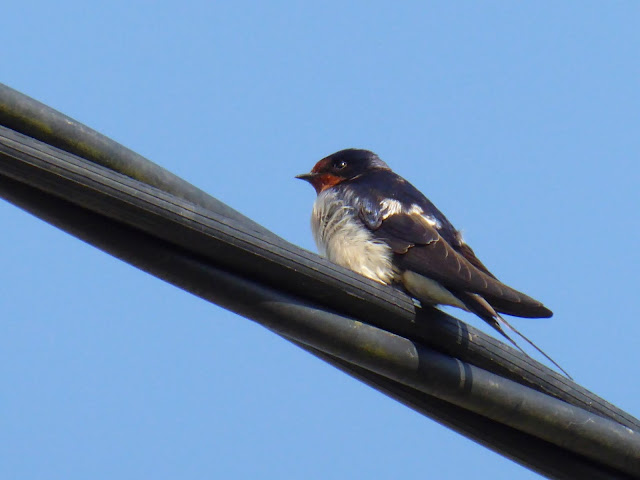What To Look For In Spring? Hope
Are you afraid of what is not there? I am. Several times now I’ve cycled across the ford to reach my traditional meet and greet spot for swallows as they touchdown on their annual return from Africa. Bound tightly in black plastic liner with a mean little island in the middle, the agricultural reservoir never looks very promising. But when a ‘fall’ of weary migrant birds arrives it is oasis enough.
Away for a few days at Easter, I thought I would miss the reservoir moment this time. In Wiltshire I saw two swallows that had already paired up. I cycled along country lanes with thatched walls and fantasy cottages, lush fields falling away to the banks of a glittering river. The kind of scene that makes you fantasise that swallows have always been here and will return, year after year after year. The kind of scene drip-fed by the pages of nostalgia I cherish in my collection of 1960s Ladybird ‘What To Look For In Spring’ books. Pages of what’s supposed to be here, but also pages of absence too; not one of these books depicts an otter or describes the whistling calls I recorded on my phone at the reservoir one evening, shrill above the noise of the dual carriageway. Nor the prints and spraints that come to life thanks to the books I pored over as a child; otters were extinct in this area (eastern England) from the 60s to the 80s.
There’s hope in our minds that the wildlife we celebrate will remain, even as new species colonise, rendering favourite guidebooks obsolete (wasp spider, little egret, red kite…) We try to quash the fear that our little symbols of hope might not return next season, despite reading of car windscreens no longer splattered with insects, or seeing the latest approval for new-builds on the greenbelt.
I seek out a festival of hope in the search bars on social media. A symbol of freedom, beauty, stamina and community all in one species, the barn swallow is the ultimate bird on the wire; its habit of gathering in twittering flocks on telephone lines might suggest that the Twitter logo needs a longer tail.
I see the reservoir flicker into life with pied wagtails and grey wagtails and a migratory common sandpiper (exhausted, head under wing) but still no swallows. Newly hatched moorhen chicks hide from me as I pass. Then, on the way home, a single bird on the wire by the barns, a site earmarked for demolition to make way for new-builds. Across the chalk stream a new bridge for a concrete busway. Next to the reservoir, a new park and ride. Iridescent shimmer, long forked tail, neat elegance. No one else to tweet to yet. More swallows will ease my heart.
Illustration from What To Look For In Spring by Ladybird Books Ltd 1961: illustrator C. F. Tunnicliffe


Comments
Post a Comment